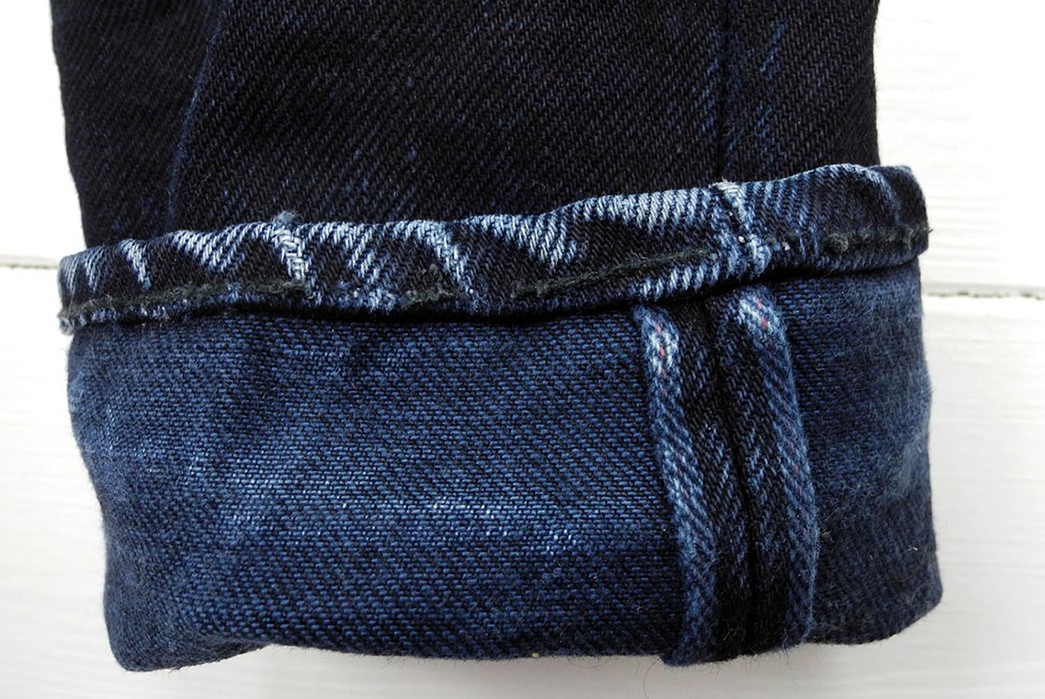- Heddels
- Posts
- FEB 4 - Vegetable Tanned Leather – Process, Benefits, and Why It Matters - Bezel
FEB 4 - Vegetable Tanned Leather – Process, Benefits, and Why It Matters - Bezel
Together with
Vegetable Tanned Leather – Process, Benefits, and Why It Matters
A closer look at vegetable-tanned leather, the naturally processed leather that is incredibly popular in the world of quality goods.
Mads Vestergaard

Leather is almost more deeply ingrained into the world of raw denim than denim itself. You can find it on the patch of your jeans, on the belt you use to hold them up, on the shoes on your feet, and even occasionally backing the rivets that hold your jeans together. With so many varied uses, it’s important to understand just exactly how leather is produced.
For animal skin to be turned into leather that can be used in the garment industry, one must first prepare and conserve it. Animal skin contains collagen, which is the skin’s main structural protein. Stabilization of this and other proteins is necessary in order to prevent the skin from breaking down and naturally decomposing. To prevent this from happening humans have, since the Stone Age, made use of tannins and their antioxidant capabilities, to make the skin resistant to the protein cleavage by enzymes (rotting) and thus conserving the leather.
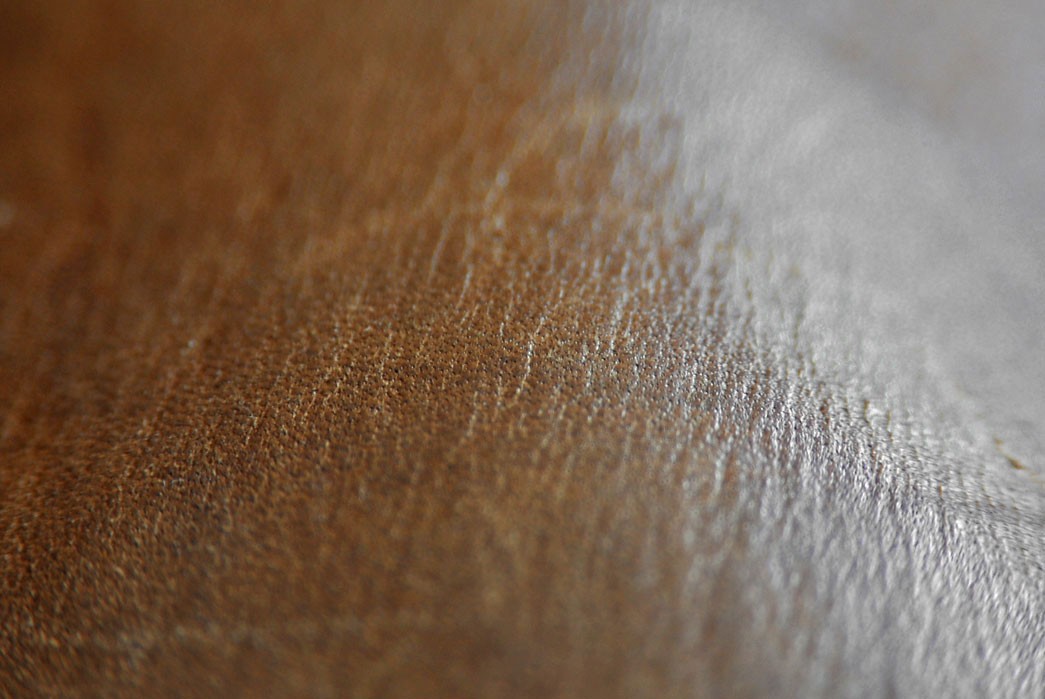
A closer look at an aged vegetable-tanned leather and the clusters of collagen. Image via Ware Makers.
Tannins are “a yellowish or brownish bitter-tasting organic substance present in some galls, barks, and other plant tissues, consisting of derivatives of gallic acid, used in leather production.” The process of using tannins to preserve collagen is called tanning.
If you want to get into the science behind it, tanning replaces the water molecules in the hide with the phenolic groups of tannins–the less water, the less likely it is to rot. Bog bodies dating back to 400 BCE are good examples of how the tannins in swamps are able to preserve the skin post-mortem. Tannins’ sharp, astringent taste is known from tea and some types of red wines and is due to the binding of tannins to proteins in saliva.
Vegetable Tanning Leather vs. Chrome Tanning Leather
Various tanning methods are being used today. The oldest and most intricate process is vegetable tanning. Vegetable tanning is the traditional method of tanning leather, its method dating back to approximately 6000 BCE. As the name suggests, veg-tanning is an organic method relying on natural vegetable tannins from bark or other plant tissues. Tannins from trees such as oak, chestnut, or mimosa are popular, but hundreds of tree types and other plants are known to have been used.
Newer, faster tanning methods make use of minerals like chromium sulfate (i.e. chrome tanning, chromexcel), which wasn’t invented until the mid-nineteenth century. It’s the same principle: to cross-link the collagen matrix to prevent putrefaction and hence decomposition. This is done by binding chrome salts to the collagen protein, forming cross-links between the two, thus creating stable structures of chromium-protein complexes. The method utilizes large rotating drums with chromium salt solutions “washing” the leather.
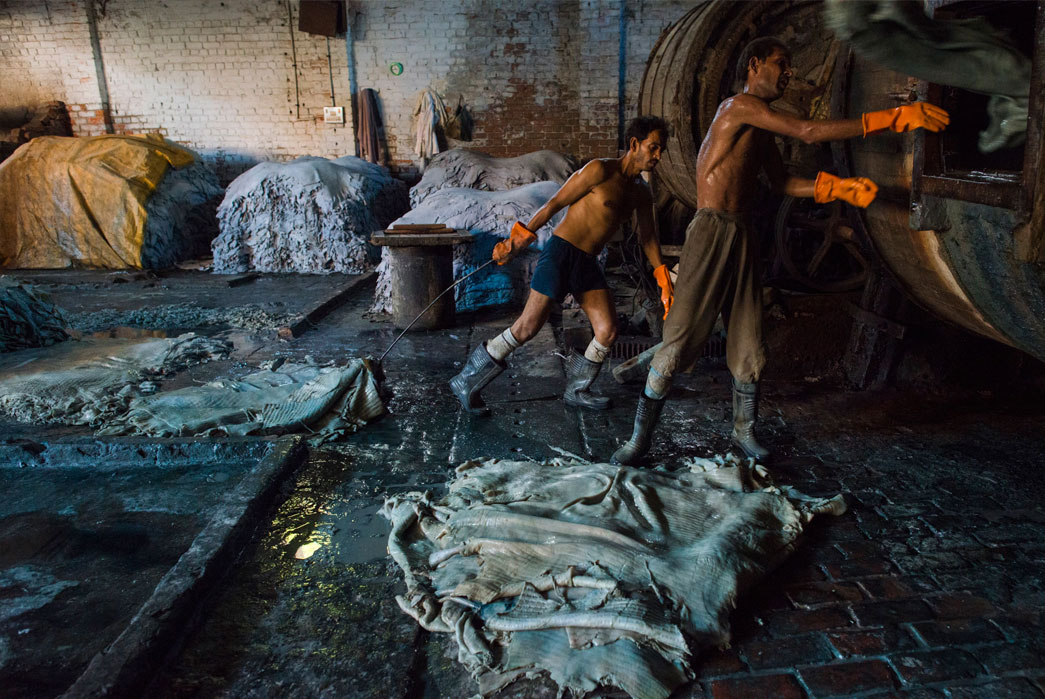
A leather tannery in Kanpur, India where workers treat buffalo leather hides with lye and chromium. Image via National Geographic.
Chrome tanning is significantly faster than vegetable tanning and can be done in less than a day, and it generally produces a supple leather that reacts well to water and keeps its finish throughout its “life”. The method of chrome tanning is responsible for about 80% of all leather production worldwide due to its properties and product efficiency, making it a low-cost way of preparing leather. The use of heavy metal minerals, however, is often more damaging to the environment.
The Benefits of Vegetable Tanned Leather

Vegetable tanning is generally a time-consuming process requiring highly skilled craftsmen, which involves soaking hides in large baths of concentrated tannins over a course of several months. It is still used for special purposes of heavy leather for shoe soles, belts, etc. This method is the most typically associated with heritage clothes and goods, and the traditional approach of vegetable tanning should be sure to appeal to any ‘wabi-sabi’ enthusiast.
Some of the features and benefits associated with vegetable-tanned leather that make it relevant in the heritage community include:
Traditional approach
Leathers are thick and hard-wearing
All materials are biodegradable
Natural feel and “earthy” smell
Develops a patina with use and age
Feels more organic
Before hides are taken to a tannery, the hair and fat from the skin have to be removed, preferably as quickly as possible as the fats easily oxidize and go rancid, which can lead to discoloration and affect the look of the final leather. Subsequently, the hides are washed in baths of salt and soap in order to preserve further extracted fatty oils. The precise processes will naturally vary from tannery to tannery.
Billykirk Natural Vegetable-Tanned Leather Valet Tray, available for $50 from Billykirk.
/ In Partnership with Bezel /
How about the width of the screws on an Audemars Piguet Royal Oak? Or the lug-size on a 1930s Cartier Tank Watch?
We don’t either.
Which is why we use Bezel, the world's top-rated marketplace for buying and selling luxury watches.
Every watch sold of their tens of thousands of listings goes directly to their HQ, where it’s authenticated by their in-house team of industry experts who know every detail of every timepiece to verify what you paid for is actually what you’ll get.
Download the app to find your next watch on Bezel.
How J&FJ Baker Tannery Makes Vegetable Tanned Leather
Some tanneries, like J&FJ Baker Tannery in Devon, England practice a unique and age-old technique of vegetable tanning, using oak bark – a tree commonly found in England. Oak bark tanning used to be the standard method of tannage in Britain, but now the Baker family is the only remaining oak bark tannery in Britain.
The tannery, which was bought by the Baker family in 1856 has, according to the family, been producing leather since the Roman Empire. Their leather is still popular with fine shoemakers as well as high-end goods and bags. The tanning process at Baker is particularly slow, creating a finished hide takes an entire year but the master tanners there soldier on with the millennia-old methods.
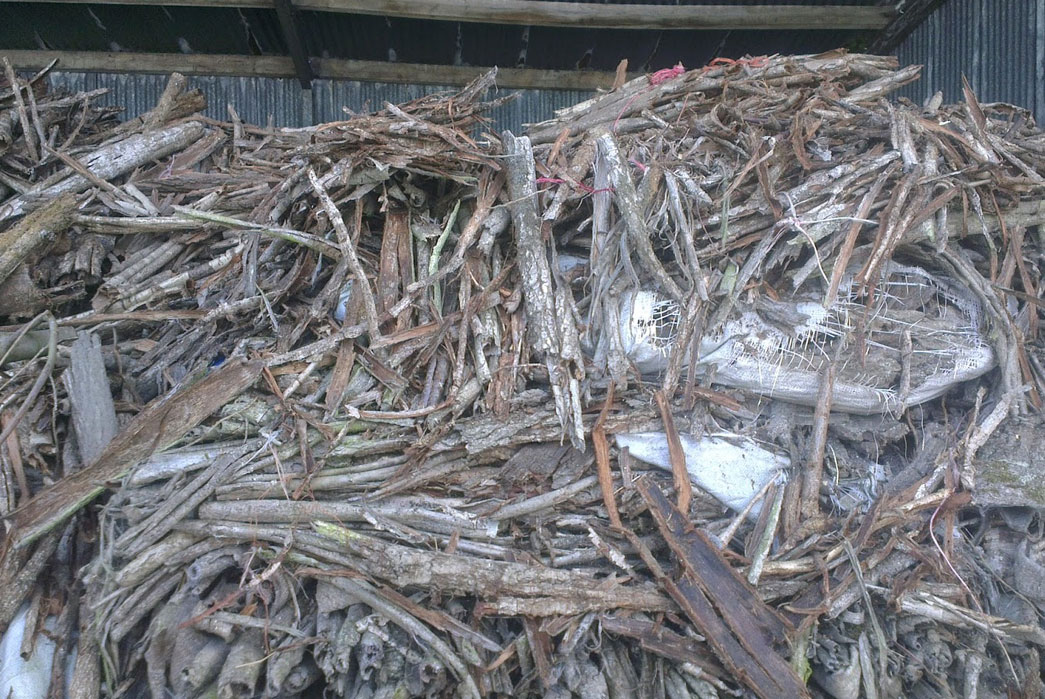
Oak bark drying at Baker’s Tannery. Image via carreducker.blogspot.ca/
In the spring, Baker strips oak bark straight from the trees. The bark then dries for two to three years and is broken down into 2-3 inch pieces. These bark chips provide the raw material for the tan yards. The oak bark then mixes with cold water to extract the tannins from the oak bark–similar to cold brewing a big pot of tea.
When the tan is strong enough, tanners dip the hides into the tanning yard, which is divided into 72 pits with the strongest concentrations located at the top of the yard. The new hides are put in at the bottom of the yard and gradually move up the yard on a weekly basis until they reach the strongest pits. After three months, the hides are layered on top of each other with oak bark in between each hide (like a big sandwich to go with the tea), which are then left in the pit for another nine months.
By the end of this process, the raw hide will be converted into leather. They’re drained for two or three days and then finished. The drawback to oak bark tannage is its slow process, but it produces some very hard-wearing leather with high tensile strength suitable for leather soles and it doesn’t require minerals or heavy metals.
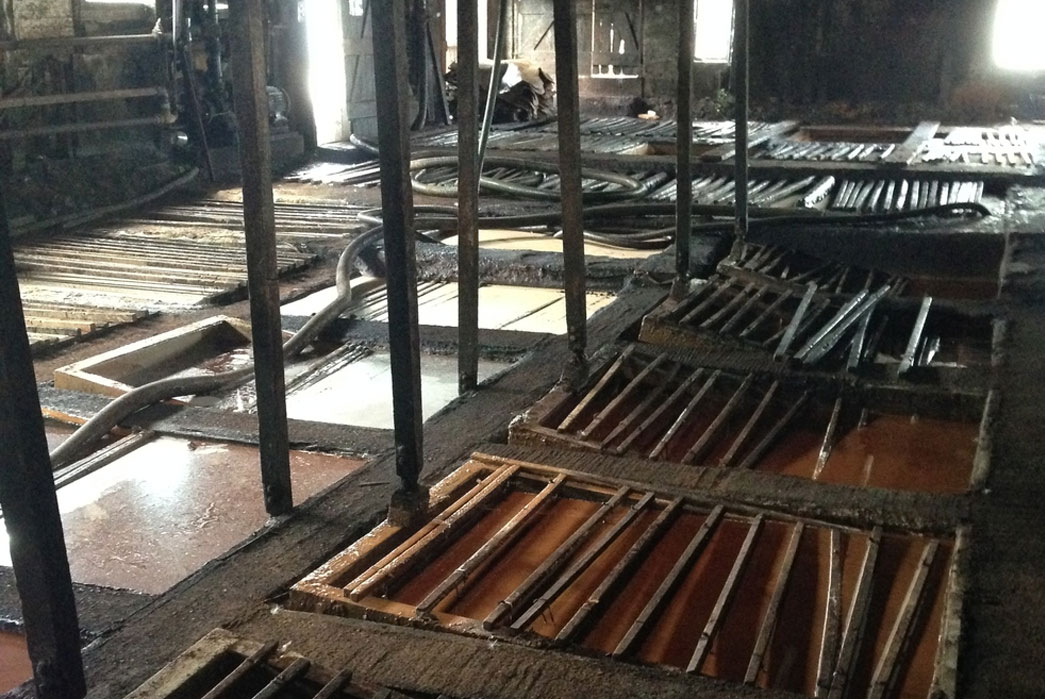
The old tan yard at Baker’s Tannery. Image via otzilondon.com
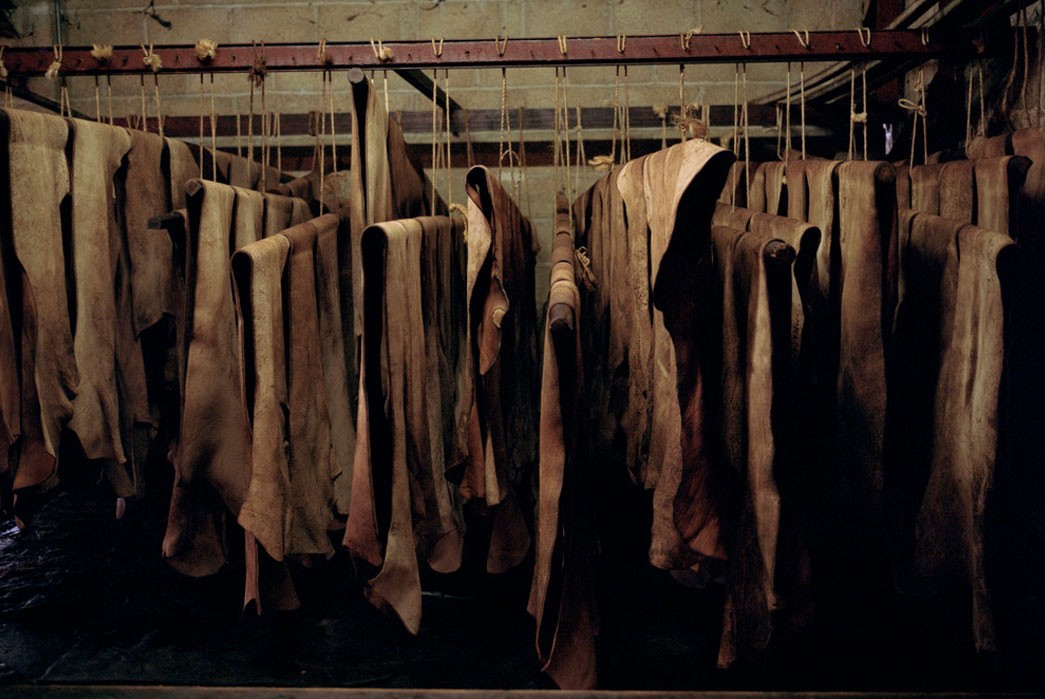
Hides drying at Baker’s Tannery. Image via holeandcornermagazine.com
J&FJ Baker supplies leather to high-end footwear brands such as Crockett & Jones and high-end bag makers Purdey and Charlie Borrow. Other big tanneries like Horween Leather Companyin Chicago make use of both chrome and vegetable tanning, supplying leather to many heritage footwear brands including John Lofgren and Viberg.
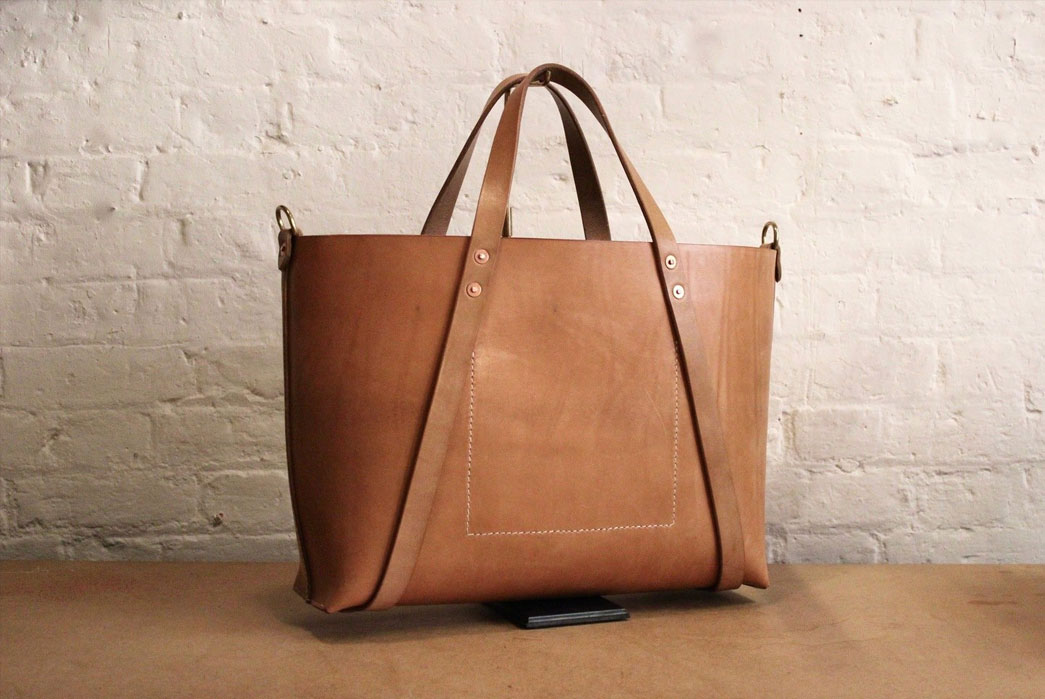
WholeCut Type II by Charlie Borrow. Hand-stitched leather bag in Russet (un-dyed) bridle leather from Baker’s Tannery in Devon. The body is cut from a single piece of leather. Image via Charlie Borrow.
Environmental Impacts
According to BLC Leather Technology Centre, the environmental impacts of leather manufacturing can be measured by two key parameters:
How the leather is manufactured: from hide to finished leather
What inputs are used to manufacture it: chemical selection
These two parameters roughly determine how eco-friendly the leather manufacturing process is. However, the individual manufacturing processes, chemical selection, and how these are handled are all different from tannery to tannery. But contrary to the common understanding that vegetable tanning is better for the environment, some studies have suggested that chrome and vegetable tanning have very similar environmental impacts.
The biggest downside to chrome tanning is purely the scale at which it’s practiced. Leather is usually a byproduct of livestock farming, but sometimes it’s the other way around. Animal husbandry is polluting in itself, and naturally the greater the scale, the more pollution. Chrome has end-of-life issues too which are greater than other tannages like oak.
The downside to vegetable tanning, though, is it takes an exceptional amount of water. The scale at which it is manufactured, however, is marginal compared to the effect of chrome tanning. This is all too technical for me to draw my own conclusions, and so it’s good that BLC operates an EcoSure mark which all tanneries that comply with the requirements, are eligible to use.
Notable Makers of Vegetable Tanned Leather Products
Accessories
Footwear
Like this? Read these:
What did you think of today's newsletter? |




